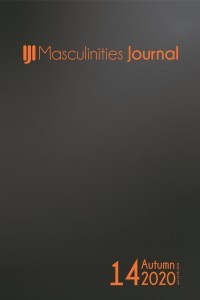Proust’ta Arzu ve Gey Sinematik Romantizm’inde Erkeklik
1987-2011 yılları arasında Avrupa’da, Birleşik Devletler’de, Arjantin’de ve İsrail’de, gey romantik dramasında erkeklik çalışmasını temel alan 25 gey filmi çekildi. Bu filmlerin olay örgüsündeki ortak motif, karşı cinse ilgi duyduğunu zanneden bir erkeğin, eşcinsel ya da cinselliğinde akışkan olduğunu fark etmesidir. Charles Perrault’nun (1657) zihin açıcı hikayesi “Uyuyan Güzel” ve onun 19. yüzyıl feminist yazınındaki revizyonu, bu gey filmlerinin ortak dramatik unsurudur. Sosyal yapıların baskıcı doğasını konu alan erken feminist yazın ile heteronormatif toplumsal cinsiyet beklentilerinin kırılması arasında benzerlikler mevcuttur. Bu makale, romantizmin üslup olarak tasdik edilen bazı hetero-normatif geleneklerinde bile, zira zıtcinsel görünüme sahip iki erkek her iki rolü de icra eder, erkekliğin sorunsallaştırıldığını ve kuirliğin mizaç seviyesinde vuku bulduğunu öne sürmektedir
Anahtar Kelimeler:
Film çalışmaları, gey romantizmi, kuir teori, Proust’ta arzu
Proustian Desire and the Queering of Masculinity in Gay Cinematic Romance
Twenty-five gay films produced from 1987 to 2011 in Europe, the US, Argentina and Israel form the basis for this study on masculinity in gay romantic drama. The shared plot motif is a selfassumed straight man realizing that he is homosexual or fluid in his sexuality. The narrative trope of awakening from the folk tale “Sleeping Beauty” (1657) by Charles Perrault, and its revision in late 19th century feminist literature, is the common dramatic component of these gay films. There are similarities with early feminist literature in the representation of the repressive nature of social structures and the fracturing of hetero-normative gender expectations. The article argues that even as some of the heteronormative conventions of the romance as a genre are upheld, because two straight-looking men perform both roles, masculinity is problematized and a queering takes place at the level of temperament
Keywords:
Film studies, gay romance, queer theory, Proustian desire,
- Başlangıç: 2014
- Yayıncı: Eleştirel Erkeklik İncelemeleri İnisiyatifi
